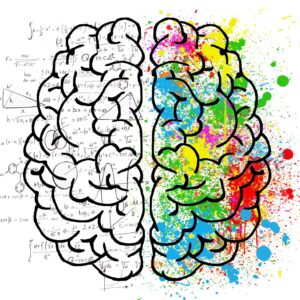With the advancements in natural language processing (NLP) and machine learning, AI-generated text has become increasingly common. From chatbots and virtual assistants to news articles and social media posts, AI-generated text is being used more and more in our daily lives. However, it is important to be able to distinguish between text written by a human author and text generated by an AI. In this blog post, we will explore methods for specialists and the general public to detect AI-generated text, with a particular focus on the ChatGPT model.
What is AI-generated text?
AI-generated text refers to text that has been created by an artificial intelligence system, rather than a human author. These systems use machine learning algorithms and large datasets to learn patterns and generate text that mimics human writing. AI-generated text can take many forms, including chatbot conversations, news articles, social media posts, and more.
One of the most advanced language models currently available is ChatGPT, an AI-powered tool that can generate high-quality text in a wide range of styles and tones. However, even the most sophisticated language models have limitations that can reveal whether a text was written by a human or by AI.
Why is it important to detect AI-generated text?
Detecting AI-generated text is important for several reasons. First, it helps to ensure that the text we read is trustworthy and accurate. AI-generated text can sometimes contain errors or biases that are not present in human-written text. By detecting AI-generated text, we can verify the source and potentially identify any issues with the text.
Second, detecting AI-generated text is important for protecting intellectual property. If someone uses an AI model to generate text that is similar to an existing work, it could be considered plagiarism or copyright infringement. By detecting AI-generated text, we can ensure that authors receive credit for their work and that intellectual property rights are respected.
Methods for Specialists to Detect AI-generated Text
Specialists in NLP and machine learning have developed several methods for detecting AI-generated text. These methods typically involve analyzing the text at a deeper level, looking for patterns and inconsistencies that are not present in human-written text. Some of the most common methods include:
Language Model Analysis
One way to detect AI-generated text is to analyze the language model used to generate the text. AI models like ChatGPT use statistical patterns to generate text, which can sometimes result in unique language patterns that are not present in human-written text. By analyzing the language model, specialists can identify these patterns and use them to identify AI-generated text.
Metadata Analysis
Another method for detecting AI-generated text is to analyze the metadata associated with the text. AI-generated text may have unique metadata, such as timestamps or author names that are not present in human-written text. By analyzing this metadata, specialists can identify potential AI-generated text.
Statistical Analysis
Specialists can also use statistical analysis to detect AI-generated text. AI-generated text may have unique statistical patterns, such as an unusual frequency of certain words or phrases, that are not present in human-written text. By analyzing these patterns, specialists can identify potential AI-generated text.
Methods for the General Public to Detect AI-generated Text
While specialists have developed sophisticated methods for detecting AI-generated text, the general public can also take steps to identify AI-generated text. Some of the most accessible methods include
Read the Text Carefully
The simplest way to detect AI-generated text is to read the text carefully. AI-generated text may have a robotic or unnatural tone that is not present in human-written text. It may also contain errors or inconsistencies that are less common in human-written text.
Look for errors and inconsistencies
Although AI-generated text can be remarkably lifelike, it can also contain errors and inconsistencies that would be unlikely to appear in text written by a human. These may include spelling errors, grammatical mistakes, and awkward phrasing. Additionally, AI-generated text may lack the subtle nuances of human language, such as idiomatic expressions, cultural references, and humor.
Evaluate the coherence and flow
Another way to detect AI-generated text is to evaluate its coherence and flow. AI-generated text may lack the logical structure and coherence of text written by a human author. This is because language models like ChatGPT are trained on vast amounts of data and may not always be able to contextualize the information in a meaningful way. As a result, AI-generated text may appear disjointed or rambling.
Check for repetition
AI-generated text can also be prone to repetition, as language models tend to rely on patterns and familiar phrases to generate new text. This can result in text that feels formulaic or robotic, with little variation in style or tone.
Assess the context and purpose
Finally, it’s important to consider the context and purpose of the text when evaluating whether it was written by a human or by AI. For example, if the text is designed to promote a product or service, it may be more likely to have been generated by AI, as businesses often use language models to create marketing copy. On the other hand, if the text is a personal essay or memoir, it is more likely to have been written by a human.
Conclusion
AI-generated text is becoming more and more prevalent in today’s digital landscape, and it can be difficult to discern whether a piece of text was written by a human author or by AI. However, by keeping these tips in mind and evaluating the text for errors, coherence, repetition, and context, it is possible to identify AI-generated text and distinguish it from human-written text. By understanding the capabilities and limitations of language models like ChatGPT, we can develop more critical reading skills and make more informed decisions about the information we consume.





